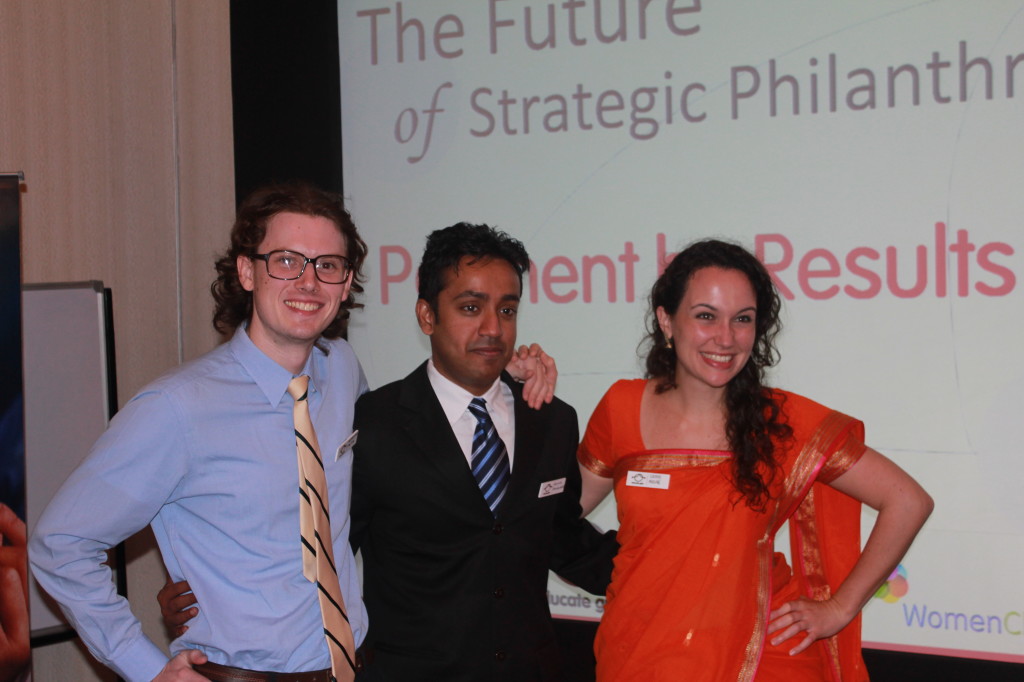
Why is Educate Girls launching the first Payment-by-Results program in India?
Alex and I have been quite busy lately at Educate Girls… Many exciting projects are taking shape, meaning that the work load is constantly increasing. A great opportunity for us to learn more and to gain experience as EG’s program is drastically expanding. In the coming five years, we plan to scale from 3 to 15 gender-gap districts in rural India. To do so we rely on a very innovative method: a Payment-by-Results (PbR) funding scheme.
This PbR solution is the first of the sort in the country. It requires different actors united to create meaningful impact: Educate Girls as the organization dealing with the beneficiaries, a risk-taker providing the upfront investment, and a donor paying for the social outcomes. In other words, Educate Girls starts running the program with the funds provided by Donor Number 1. Once targets are achieved, Donor Number 2 steps in and reimburses Donor Number 1 with an interest rate. Of course, the amount of this repayment depends on the results achieved by Educate Girls.
Full or partial funding is thus tied to matching pre-determined goals. This way the initial risk-taker rests ensured of a high social return on its investment while the final donor only pays for acted results. These results are evaluated by a third-party, an independent auditor in charge of monitoring and verifying the impact of the program.
Several international development agencies, such as the UK Department For International Development (DFID) and the U.S. Agency for International Development (USAID), have already adopted this new funding philosophy.
Instiglio, a Harvard-incubated consultancy that designs, structures and implements results-based financing models, will provide us with technical advice for the duration of our pilot program.
 This pilot has been launched in the district of Sirohi in July and will be run in approximately 200 schools until 2015. Schools are divided between those that do not benefit from the Educate Girls program, those that receive Educate Girls program under traditional up-front financing scheme and those that receive Educate Girls program and PbR funding. In two years, we will be able to check if this incentive has effectively improved the quality of the services delivered by our NGO. Have more girls been enrolled and retained into schools? Have the quality of their learning improved? Can they read and count better? Are Rajasthani schools more girl-friendly, with infrastructures that match the state’s requirements?
This pilot has been launched in the district of Sirohi in July and will be run in approximately 200 schools until 2015. Schools are divided between those that do not benefit from the Educate Girls program, those that receive Educate Girls program under traditional up-front financing scheme and those that receive Educate Girls program and PbR funding. In two years, we will be able to check if this incentive has effectively improved the quality of the services delivered by our NGO. Have more girls been enrolled and retained into schools? Have the quality of their learning improved? Can they read and count better? Are Rajasthani schools more girl-friendly, with infrastructures that match the state’s requirements?
As you can tell, we place a lot of hope in this Payment-by-Results funding strategy. Not only do we wish for it to pave the way for more strategic philanthropy and greater accountability in the social sector, but we also rely on it to rapidly scale up. This PbR solution should help our program reach over 30,000 schools within a short period of time. This scale would be achieved by integrating the PbR program into a social franchising model that focuses on standardized, measured and monitored impact milestones.
 All those points were presented to the public last July, as we organized three panel discussions around the country. We were happy to welcome Govind Shivkumar, Alex’s and my mentor, as one of our speakers in Bangalore. LGT VP was talking from a venture philanthropist’s perspective, sharing its thoughts on the subject.
All those points were presented to the public last July, as we organized three panel discussions around the country. We were happy to welcome Govind Shivkumar, Alex’s and my mentor, as one of our speakers in Bangalore. LGT VP was talking from a venture philanthropist’s perspective, sharing its thoughts on the subject.
Obviously, we are already planning to set up another such panel discussion in a couple of years to showcase our pilot’ inspiring results!
If you want to read more about Educate Girls’ PbR program, please check out the articles published in the Financial Times, the Economic Times, the Hindu and Next Billion.
